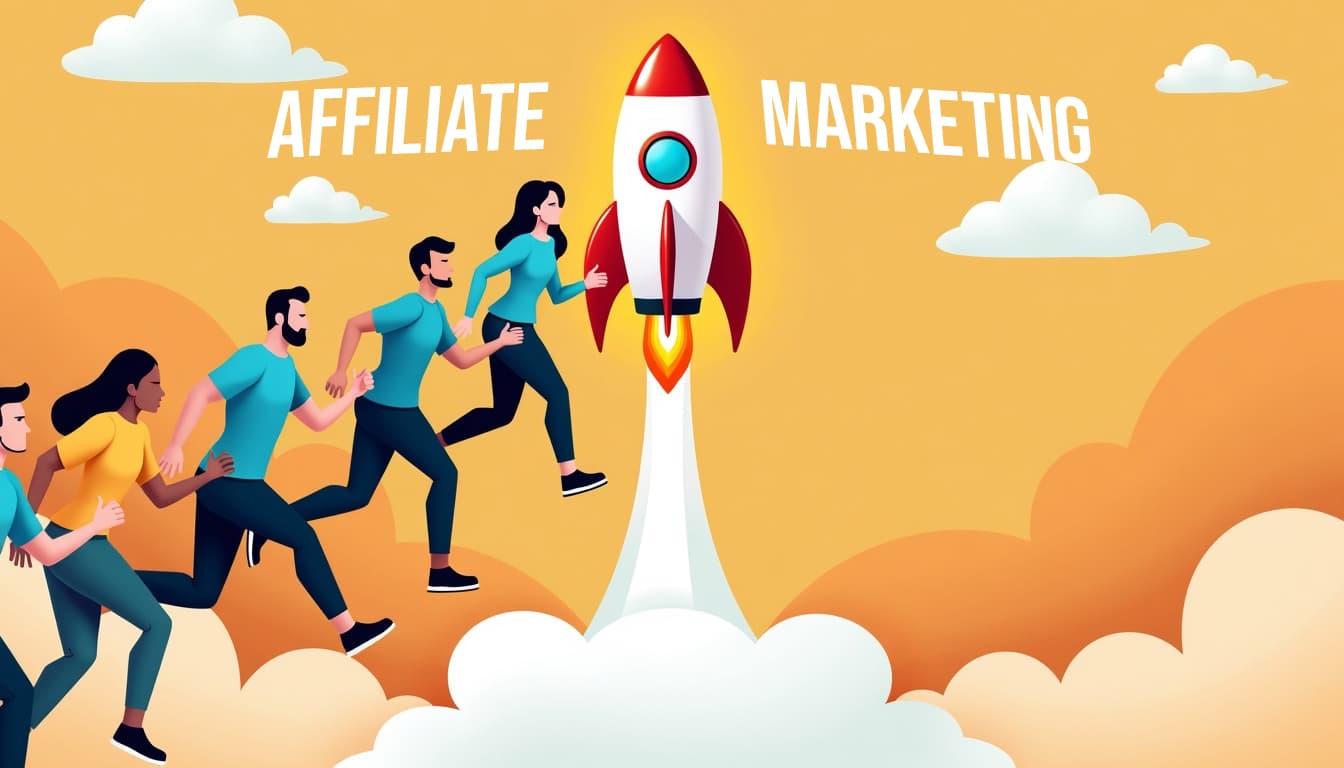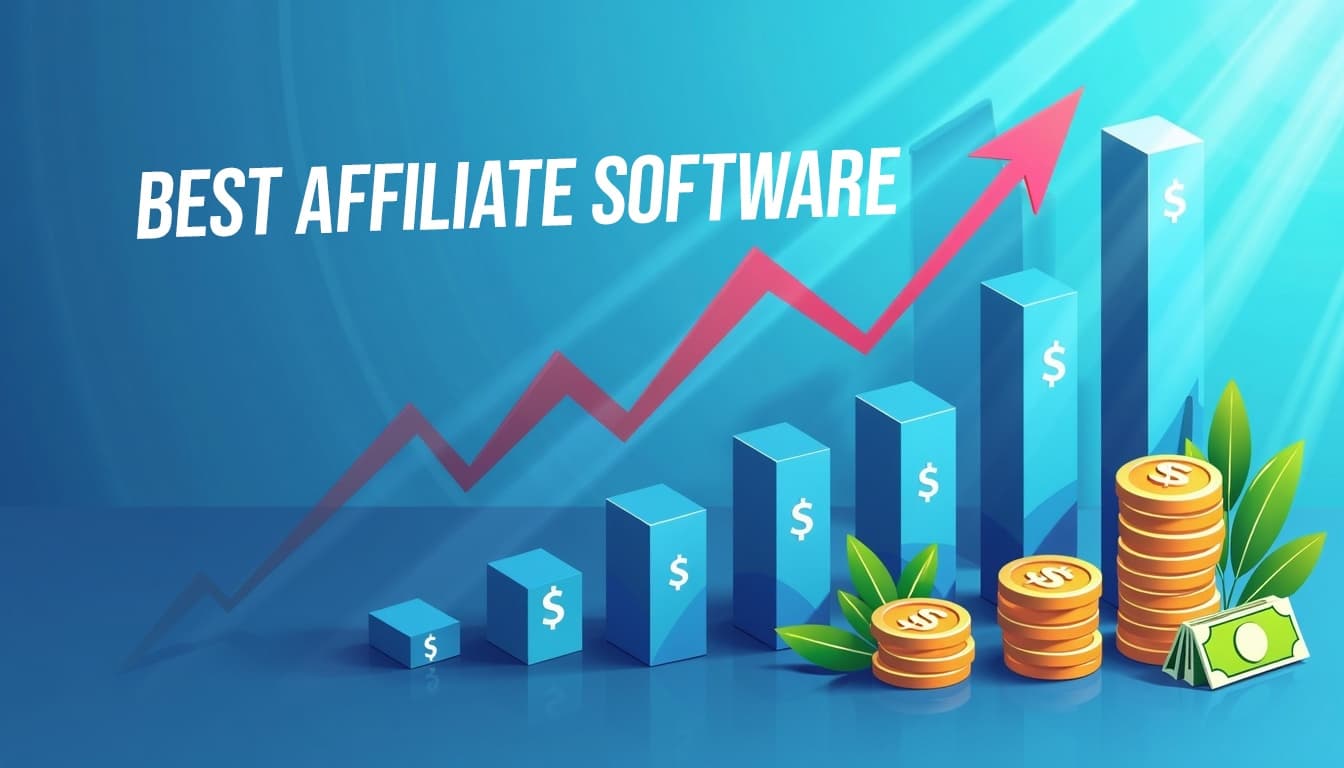As a SaaS startup founder, you're constantly searching for cost-effective ways to accelerate growth and acquire customers. With 30% of searches expected to happen through AI chat assistants by 2026, traditional customer acquisition channels are becoming more expensive and less effective.
Here's a reality check: ConvertKit generates $2M+ annually through their affiliate program. Shopify's affiliate program drives thousands of new merchants monthly. These aren't enterprise companies with unlimited budgets—they're SaaS businesses that built affiliate programs into their core growth engine.
Enter affiliate marketing—a performance-based strategy where you only pay for actual results. No upfront ad spend. No wasted budget on clicks that don't convert. Just real customers brought in by partners who believe in your product enough to stake their reputation on it.
The math is simple: If your customer lifetime value is $500 and you pay affiliates $100 per sale, you're acquiring customers at a 5X ROI while your competitors burn cash on ads with uncertain returns.
Imagine having an army of passionate advocates promoting your SaaS product 24/7, bringing in qualified leads while you focus on building your core business. That's the magic of affiliate marketing for startups—and it's more accessible than you think.
1. What is Affiliate Marketing for SaaS?
At its core, affiliate marketing for SaaS is a performance-based marketing strategy where your company (the merchant) rewards affiliates for each new customer they bring to your software product.
Here's how it typically works:
- You create an affiliate program for your SaaS product
- Partners (affiliates) sign up and receive unique tracking links
- Affiliates promote your software through various channels (blogs, email, social media)
- When someone clicks an affiliate link and becomes a paying customer, the affiliate earns a commission
The key players in a SaaS affiliate program are:
- Merchant (You): The SaaS company offering the product and affiliate program
- Affiliates: Partners who promote your software in exchange for commissions
- Customers: Users who sign up for your SaaS through affiliate referrals
SaaS affiliate programs differ from traditional ecommerce in a few important ways:
- Recurring commissions: Many SaaS companies offer ongoing commissions for the lifetime of the customer, incentivizing affiliates to bring in high-quality, long-term users.
- Longer sales cycles: Enterprise SaaS products often have a more extended consideration period, requiring affiliates to nurture leads over time.
- Product complexity: Software can be more challenging to explain than physical products, so affiliates need in-depth product knowledge.
2. Why Affiliate Marketing is a Game-Changer for SaaS Startups
For cash-strapped SaaS startups, affiliate marketing offers several compelling advantages (and pairs perfectly with AI customer support agents to handle the increased customer volume):
With affiliate marketing, you only pay for results. This performance-based model aligns perfectly with startup budgets, allowing you to scale customer acquisition without upfront costs.
As your affiliate network grows, so does your reach. You can tap into new markets and audiences through your affiliates' existing relationships and influence.
Affiliates act as brand ambassadors, introducing your SaaS to their engaged audiences. This third-party validation can significantly boost your credibility in the market.
Partnering with affiliates who have authority in specific industries or use cases allows you to reach highly targeted, relevant audiences that might be difficult to access through other marketing channels.
3. Getting Started with SaaS Affiliate Marketing
Before launching your program, it's crucial to lay a strong foundation:
Define what success looks like for your affiliate program. Common goals include:
- New customer acquisition targets
- Revenue generated through affiliates
- Increased market share in specific verticals
Your commission structure should be competitive and motivating for affiliates while remaining profitable for your business. Here's what actually works:
Recurring commissions (most effective for SaaS):
- 20-30% recurring for the lifetime of the customer
- Example: ConvertKit pays 30% recurring—if an affiliate brings in a customer paying $100/month, they earn $30/month as long as that customer stays
- Why it works: Aligns affiliate incentives with customer retention, not just initial signup
One-time commissions (good for quick wins):
- $50-200 flat rate per signup, or 50-100% of first month's payment
- Example: Pay $100 for each annual plan signup ($1,200 value)
- Why it works: Simpler to manage, lower long-term cost, good for high-LTV products
Tiered structures (motivates growth):
- 0-10 sales: 20% commission
- 11-50 sales: 25% commission
- 51+ sales: 30% commission
- Why it works: Incentivizes affiliates to scale their promotion efforts
Real-world benchmark: Most SaaS companies pay 20-30% recurring or 50% of first payment. Less than 15% and you won't attract quality affiliates. More than 40% and your unit economics probably don't work.
Not all affiliates are created equal. Identify the characteristics of partners who are most likely to succeed in promoting your SaaS:
- Industry expertise
- Audience demographics
- Content platforms (blog, YouTube, podcast)
- Promotional methods
Equip your affiliates with high-converting marketing materials:
- Banners and graphics
- Landing page templates
- Email swipe copy
- Product demo videos
Reliable tracking is the backbone of any successful affiliate program. Your program will live or die based on tracking quality—affiliates will leave if your tracking drops their conversions or has bugs. Choose a solution that can accurately attribute conversions, manage payouts, and provide robust reporting.
Don't cheap out on tracking. The $50/month difference between garbage software and reliable software will cost you thousands in lost commissions and burned affiliate relationships.
For a comprehensive comparison, check out our guide to the 11 Most Reliable Affiliate Tracking Software in 2025. We cover everything from Tolt ($49/mo, 0% transaction fees, 5.0/5.0 rated) and Affonso ($12.50/mo with AI affiliate discovery) to enterprise platforms like PartnerStack (127K+ partners, $2.5B+ driven).
4. Building Your SaaS Affiliate Program
With the groundwork laid, it's time to bring your program to life:
Clearly outline the rules of engagement, including:
- Commission rates and structure
- Payment terms and thresholds
- Prohibited promotional methods
- Intellectual property guidelines
Focus on quality over quantity when building your affiliate network:
- Reach out to industry influencers and thought leaders
- Leverage existing partnerships and customer relationships
- Attend relevant conferences and events
- Use affiliate networks to connect with established partners
Set your affiliates up for success with a comprehensive onboarding process:
- Provide in-depth product training
- Share best practices and promotional strategies
- Offer regular webinars and educational content
Maintain an open line of communication with your affiliates:
- Designate an affiliate manager as the main point of contact
- Create a knowledge base or resource center
- Send regular newsletters with program updates and tips
5. Optimizing Your SaaS Affiliate Program
Continuous improvement is key to long-term success:
Regularly test different elements of your program to maximize conversions:
- Commission structures
- Promotional copy and creatives
- Landing page designs
Motivate top performers and drive desired behaviors:
- Increase commission rates for higher sales volumes
- Offer bonuses for reaching specific milestones
- Provide special incentives for enterprise deals
Use affiliate performance data to identify areas for improvement:
- Analyze which types of content drive the most conversions: If YouTube reviews convert at 8% but blog posts only convert at 2%, shift your affiliate recruitment toward video creators
- Identify top-performing affiliates and replicate their strategies: If your top affiliate uses email sequences with case studies, create templates for other affiliates to use the same approach
- Optimize the customer journey based on conversion data: If 60% of affiliate traffic bounces from your pricing page, create a special landing page for affiliate referrals with clearer value propositions
- Track time-to-conversion: If most affiliate sales happen within 7 days, set your cookie window to at least 30 days to capture delayed decisions
- Monitor traffic quality: An affiliate with 1,000 clicks and 2 signups (0.2% conversion) is worse than one with 100 clicks and 5 signups (5% conversion)—reward quality over quantity
Streamline program management to scale efficiently:
- Implement automated commission calculations and payouts
- Provide real-time reporting dashboards for affiliates
- Use API integrations to connect your affiliate platform with other tools
6. Measuring Success: Key Metrics for SaaS Affiliate Programs
Track these essential KPIs to gauge the health and impact of your program:
Calculate the total cost of acquiring a customer through your affiliate program, including commissions and operational expenses.
Measure the long-term value of customers brought in through affiliates compared to other acquisition channels.
Identify your most effective affiliates and promotional methods to optimize resource allocation.
Accurately attribute revenue to your affiliate program and calculate its overall return on investment.
7. Common Pitfalls to Avoid
Steer clear of these mistakes that can derail your SaaS affiliate program:
Don't treat affiliates as mere lead generators. Build genuine partnerships to foster long-term success.
Provide affiliates with a steady stream of fresh, high-converting assets to maintain engagement and drive results.
Invest in reliable tracking technology to ensure accurate commission payments and program optimization.
Regularly review and adjust your affiliate strategy to align with your evolving business goals and market position.
8. Case Studies: Successful SaaS Affiliate Programs
Learn from these SaaS companies that have mastered affiliate marketing:
Shopify's affiliate program offers recurring commissions, making it attractive for affiliates to promote their e-commerce platform. They provide extensive educational resources and a dedicated affiliate manager for top performers.
Key takeaway: Align affiliate incentives with long-term customer value to drive sustainable growth.
Email marketing platform ConvertKit leverages its creator-focused community to drive affiliate sales. They offer a 30% recurring commission and provide affiliates with authentic, story-driven marketing materials.
Key takeaway: Tap into your existing user base and community to find passionate affiliate partners.
9. Future Trends in SaaS Affiliate Marketing
Stay ahead of the curve by embracing these emerging trends:
Artificial intelligence will play a growing role in optimizing affiliate programs, from predictive analytics to personalized commission structures.
As the influencer landscape evolves, partnering with highly targeted, niche affiliates will become increasingly valuable for SaaS companies.
Successful affiliate programs will seamlessly integrate with content marketing, social media, and other digital strategies for a cohesive customer acquisition approach.
10. Conclusion: Taking Action
Affiliate marketing presents a powerful opportunity for SaaS startups to accelerate growth and acquire customers cost-effectively. By leveraging the reach and influence of strategic partners, you can expand your market presence while maintaining focus on your core product development.
To recap the key benefits of affiliate marketing for SaaS startups:
- Performance-based customer acquisition
- Scalable growth without upfront costs
- Increased brand awareness and credibility
- Access to targeted, niche audiences
Ready to launch your SaaS affiliate program? Here's your exact action plan:
Week 1: Foundation
- Calculate your max commission rate (must maintain positive unit economics)
- Choose your affiliate tracking software—don't cheap out here, broken tracking kills programs
- Write clear program terms (commission structure, payment schedule, prohibited tactics)
Week 2: Setup
4. Create 3-5 marketing assets (email templates, social media copy, banner ads)
5. Build your affiliate landing page explaining the program benefits
6. Set up your tracking and test it thoroughly (do test transactions yourself)
Week 3-4: Initial Recruitment
7. Recruit 5-10 affiliates to start (existing customers who love your product, industry bloggers, niche YouTubers)
8. Personally onboard each affiliate—provide product training, share what's working
9. Create a simple one-pager with "how to promote" best practices
Month 2+: Optimize & Scale
10. Monitor performance weekly—which affiliates convert, which traffic sources work
11. Double down on what's working (recruit more affiliates similar to your top performers)
12. Iterate on commission structure based on actual conversion data
First 90 Days Goal: 20-30 active affiliates driving 10-15% of new customer signups.
Common Mistakes to Avoid:
- Starting with 100+ affiliates (start with 10 quality partners instead)
- Paying commissions manually (automate from day one)
- Ignoring your affiliates after onboarding (weekly communication minimum)
- Choosing cheap tracking software that loses conversions (affiliates will quit)
Remember, ConvertKit started with their founder personally recruiting 10 creator friends. Shopify's affiliate program began with a handful of web developers. You don't need a perfect program—you need to start, learn, and iterate.
Your program will live or die based on tracking quality. Invest in reliable affiliate software from day one, or you'll lose good affiliates to broken attribution.
By implementing a well-structured affiliate program, you'll unlock a performance-based growth channel that scales without increasing your ad spend.


